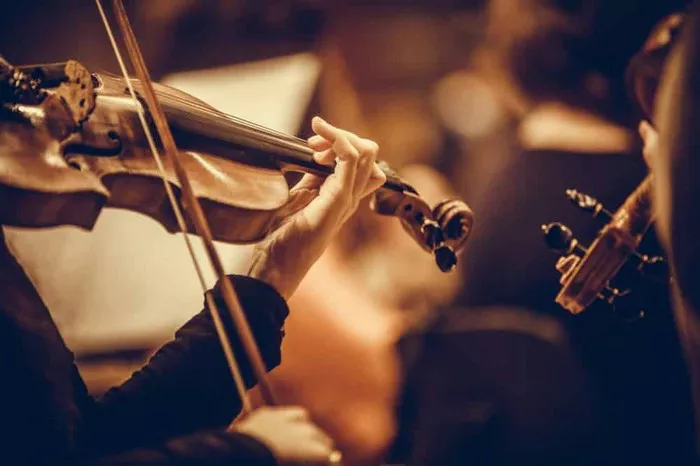Classical waltz music stands as a testament to the enduring allure of graceful movements and refined melodies. Originating in the 18th century, this genre has captivated audiences with its distinct rhythm, elegant structures, and emotive expressions. In this article, we delve into the essence of classical waltz music, exploring its history, characteristics, notable composers, and enduring impact on the world of music and dance.
The Origins and Evolution of Classical Waltz Music
The roots of classical waltz music can be traced back to the late 18th century, primarily in the cultural hubs of Vienna and Austria. Initially, the waltz emerged as a folk dance in rural areas, characterized by its triple meter and lively tempo. However, it wasn’t until the early 19th century that the waltz gained prominence as a sophisticated ballroom dance in European aristocratic circles.
During the Romantic era, composers like Franz Schubert and Johann Strauss II elevated the waltz to new heights of artistic expression. Their compositions, such as Schubert’s “Waltzes for Piano” and Strauss II’s iconic “The Blue Danube,” exemplified the elegance, grace, and emotive depth inherent in classical waltz music.
Key Characteristics of Classical Waltz Music
Classical waltz music is distinguished by several key characteristics that contribute to its timeless appeal:
Triple Meter: Waltzes are typically written in 3/4 time signature, accentuating the rhythmic pattern of three beats per measure. This rhythmic structure lends itself to the fluid, sweeping motions of the dance.
Melodic Grace: One of the hallmarks of classical waltz music is its melodic elegance. Composers often craft intricate, soaring melodies that flow seamlessly over the waltz rhythm, creating a sense of beauty and emotional depth.
Dynamic Swells: Waltzes often incorporate dynamic contrasts, ranging from delicate pianissimo passages to grand fortissimo crescendos. These dynamic swells add depth and intensity to the musical narrative, mirroring the ebb and flow of human emotions.
Lyrical Phrasing: The phrasing in classical waltz music is often lyrical, with phrases that breathe and unfold organically. This lyrical quality allows the music to convey a narrative or evoke a specific mood, captivating listeners with its storytelling prowess.
Iconic Waltz Compositions
1. Johann Strauss II – “The Blue Danube” Waltz
Perhaps the most famous waltz ever composed, Johann Strauss II’s “The Blue Danube” Waltz is a masterpiece that epitomizes the elegance of the Viennese waltz. Premiered in 1867, this iconic composition has become synonymous with the beauty and grandeur of classical waltz music. Its soaring melodies and rhythmic grace have made it a staple at prestigious events and celebrations worldwide.
2. Pyotr Ilyich Tchaikovsky – “Waltz of the Flowers” from “The Nutcracker”
Tchaikovsky, renowned for his ballet compositions, seamlessly incorporated the waltz into “The Nutcracker.” The “Waltz of the Flowers” is a dazzling display of orchestration and dance, capturing the enchantment of a magical garden. The composer’s ability to infuse the waltz with a sense of fantasy and allure showcases the versatility of this dance form.
3. Frédéric Chopin – “Minute Waltz,” Op. 64, No. 1
Chopin, known for his romantic piano compositions, contributed to the waltz genre with the “Minute Waltz.” Despite its name, the piece is anything but brief. The “Minute Waltz” is a whirlwind of virtuosity and lyricism, demonstrating Chopin’s ability to infuse the waltz with both technical brilliance and emotional depth.
4. Dmitri Shostakovich – “Jazz Suite No. 2: Waltz 2”
Moving into the 20th century, Shostakovich’s “Jazz Suite No. 2: Waltz 2” offers a modern take on the classical waltz. This piece, with its jazzy undertones and captivating rhythms, showcases the evolution of the waltz into a more contemporary and eclectic form while preserving its timeless charm.
The Influence of Classical Waltz Music
The influence of classical waltz music extends far beyond the realms of concert halls and ballrooms. Its melodic motifs and rhythmic patterns have permeated various genres and cultural expressions, leaving an indelible mark on music, dance, and popular culture.
In the realm of dance, the waltz remains a quintessential ballroom dance, cherished for its gracefulness and expressive qualities. Its influence can be seen in contemporary dance forms, where echoes of the waltz’s fluid movements and romantic spirit endure.
Moreover, classical waltz music has inspired composers across genres, from film composers incorporating waltz motifs in cinematic scores to contemporary musicians infusing waltz elements into modern compositions. This cross-pollination of styles and influences speaks to the enduring relevance and adaptability of classical waltz music.
See Also: Epic Classical Music
Conclusion
Classical waltz music embodies a timeless elegance that transcends boundaries of time and culture. From its humble origins as a folk dance to its evolution into a symbol of refined artistry, the waltz has enchanted generations with its graceful movements and emotive melodies. Through the contributions of visionary composers and the enduring influence on music and dance, classical waltz music remains a cherished treasure in the tapestry of musical heritage. As we continue to appreciate and celebrate its beauty, we honor the enduring legacy of classical waltz music and its everlasting allure.

